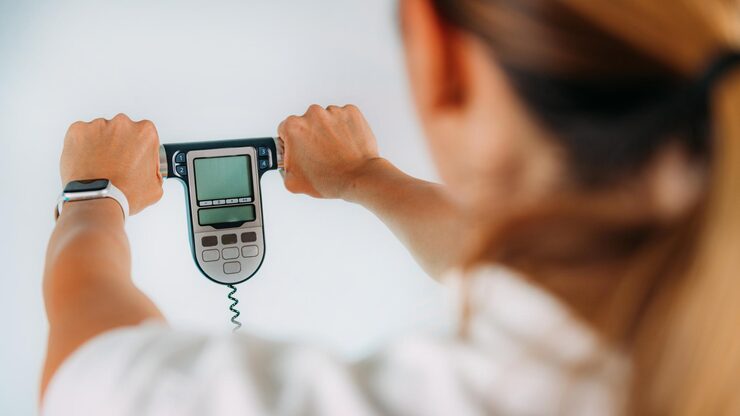
Bioimpedance Revolution In Personalized Health
With increasing healthcare expenses and changing paradigms of care, the future of personal health is tilting toward real-time, passive monitoring solutions. Of these, bioelectric impedance analysis (BIA) is no longer restricted to laboratory-grade equipment. It seamlessly integrates into objects of everyday use, like Vitali Chair, bringing a science revolution in preventive healthcare from home. This article explores the origins and future of BIA technology, illustrating why health professionals and forward-thinking consumers both must get out in front of the game.
Understanding Bioelectric Impedance Analysis (BIA)
Bioelectric impedance is a solid, non-invasive device that uses mild electricity to assess body composition. When electricity travels through the body, its speed will be based on the tissues through which it travels. Lean muscle tissue, for instance, allows electricity to travel faster, while fat and other tissues slow its travel (Kyle et al., 2004). This unique feature allows BIA devices to measure significant health indicators such as fat mass, muscle mass, level of hydration, and basal metabolic rate. Before, these were only available from medical equipment, but now with smart health furniture such as Vitali Chair, individuals can experience continuous monitoring at home. This technology makes it simple to monitor health, successfully monitoring important health data as part of regular day-to-day activities.
Body Composition As a Health Predictor
Body composition is a better indicator of health than weight. Healthy BMI can conceal underlying health threats, such as normal weight obesity, in which individuals have a greater percentage of body fat despite weighing a healthy amount. Research has shown that such individuals are more susceptible to cardiovascular disease and metabolic disorders (De Lorenzo et al., 2006). By providing users with real-time information regarding muscle-to-fat ratio, Vitali Chair empowers users to track their health beforehand. Instead of visiting the physician only occasionally or visiting them occasionally for a checkup, smart health furniture users can regularly monitor significant changes in their body composition. The constant flow of information enables users to keep pace with their health and receive early notifications when action may be necessary.
Passive Data Collection for Preventive Care
Unlike the traditional wearable devices that require users to actively check their health indicators individually, smart health furniture offers a more passive approach. Smart health furniture such as Vitali Chair incorporates bioelectric impedance sensors and load cell technology that continuously collect and analyze a user’s health parameters when seated. This rules out the conscious involvement factor, so it is best for patients who may forget to employ a gadget or track themselves via apps. The passive system guarantees data collection more uniformly and reliably, where the user is able to obtain an integrated real-time picture of their health. By incorporating health tracking into everyday activities like meals, Vitali Chair enables ongoing engagement with one’s health without effort or intentional behavior change.
Integration Into Clinical Decision Making
Medical monitoring technologies like Vitali Chair are straightforward to integrate into clinical decision-making. For example, body composition measures like BMI can be longitudinally monitored and transferred directly to healthcare professionals. Doctors can alter diet plans in real-time from the information, create customized exercise programs, and monitor improvement without necessitating frequent face-to-face meetings. With more information available, healthcare professionals can intervene earlier, warding off the development of diseases like diabetes, obesity, and heart disease. Vitali Chair offers a convenient, hands-free method for gathering such valuable information, and its interface with medical systems may transform health decision-making, for a more proactive, data-driven approach to healthcare management (Lukaski, 2013).
Democratizing Health Through Smart Furniture
The real power of Vitali Chair lies in its ability to democratize access to health monitoring. Previously, bioelectric impedance and other advanced health technologies were only accessible in medical centers, gyms, or dedicated equipment. With smart health furniture, now patients can simply incorporate health monitoring into their everyday life. This can particularly be revolutionary for the people in rural areas or with limited access to healthcare professionals. The information-driven feedback from the chair allows individuals to obtain actionable health insights into their well-being without ever leaving the comfort of their own homes. As technology improves, Vitali Chair is evidence that one day personal health information will be as easily accessible as the chairs we sit on each day and allows individuals to make good health choices long before problems arise.
Conclusion
The introduction of bioelectric impedance technology is a giant leap in healthcare, combining precision with convenience. Adding this powerful health gadget to everyday products like Vitali Chair, we are stepping into a world where it becomes a part of daily life to monitor health. This change not only allows individuals to take charge of their health, but also relieves pressure on healthcare systems by making prevention and early diagnosis attainable. Over the coming years, the use of smart health furniture will be an underpinning of personalized wellness, with a new way of managing health that is proactive and simple to utilize.

